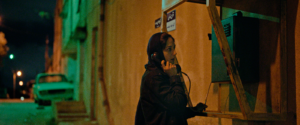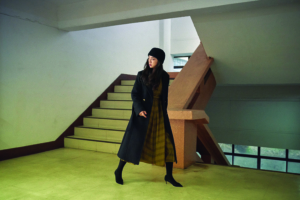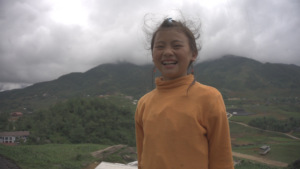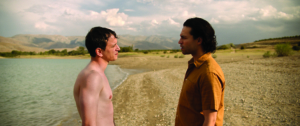There’s a great deal of expectation that comes with being first. That’s certainly true of Hussein Hassan’s The Dark Wind (2016), the first film[1]Elizabeth Kerr describes it as ‘the first feature film from Iraq, or anywhere, to deal with the horrific pogrom against the Yazidi’; see Kerr, ‘The Dark Wind: Film Review | Busan 2016’, The Hollywood Reporter, 13 October 2016, <http://www.hollywoodreporter.com/review/dark-wind-review-938079>, accessed 15 August 2017. about the attempted genocide of the Mesopotamian Yazidi people by the Islamic State of Iraq and Syria (ISIS). For many viewers, it embodies an introduction to a religion and people that would have been previously unfamiliar. I’m not just referring to myself here. Upon awarding the 2016 APSA[2]The Asia Pacific Screen Awards. Cultural Diversity Award, under the patronage of the United Nations Educational, Scientific and Cultural Organization (UNESCO), to Hassan, international jury member Nansun Shi observed that ‘[c]oming to these Awards, I had not realised the subject matter of the Yazidis, and we wanted to highlight this to the world, and bring more attention to these people’.[3]Nansun Shi, quoted in ‘Winners Announced in 10th Asia Pacific Screen Awards’, Asia Pacific Screen Academy website, 24 November 2016, <http://www.asiapacificscreenacademy.com/2016/11/winners-announced-in-10th-asia-pacific-screen-awards/>, accessed 15 August 2017.
By extension, The Dark Wind being the first feature about the Yazidi community’s suffering also makes it the only film on the subject; thus, it can be perceived as representing a definitive document of this Kurdish culture. But the incensed reaction of many Yazidis to the film – which included protests and the threat of lawsuits – suggests the sensitivity of the material. That reaction isn’t without merit. Watching the film without prior knowledge of the culture, I couldn’t help but form an impression of the ethno-religious group that was far from universally positive.
It’s difficult to determine the accuracy of Hassan’s portrayal of the Yazidi people; though it’s worth examining the intricacies of the controversy, as an Australian who’s never set foot in the Middle East, I’m hardly equipped to judge the film’s verisimilitude. Instead, I intend to address the contentious reaction to The Dark Wind’s premiere, and consider how Hassan’s aesthetic approach to the material compares to Hollywood’s depictions of conflict in the Middle East and how those stylistic choices reflect on the film’s overall portrayal of the Yazidi people.
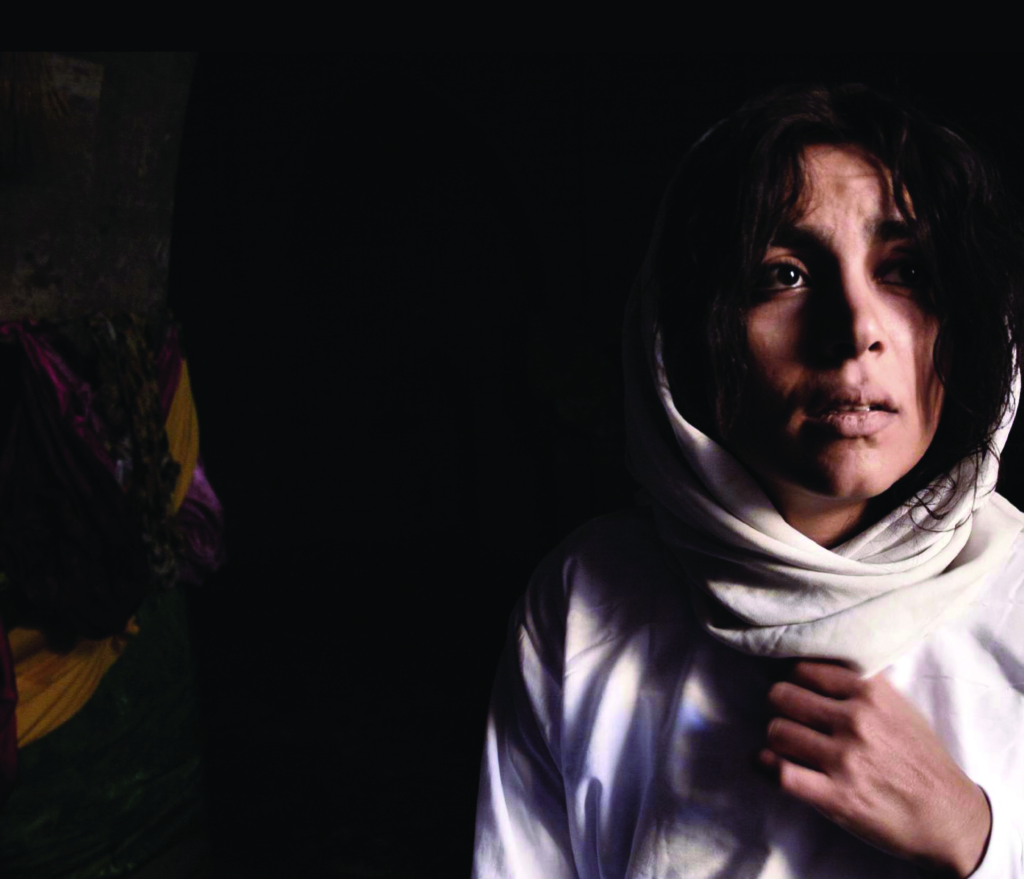
Story of division
Hassan and writer/producer Mehmet Aktaş didn’t set out to make a fiction feature. The two men were in Iraqi Kurdistan during the 2014 summer, preparing to shoot an unrelated feature, when ISIS began its attack on the region and, in particular, the Yazidi people (whom it regards, per the film’s opening title, as ‘devil worshippers’). Given the circumstances, the pair initially intended to shift gears by producing a documentary chronicling ‘the genocide against the Yazidi people and the refugee situation in Iraq’; in particular, they chose to focus on ‘women who were forced to convert to Islam and then used as “sex slaves”’.[4]Mehmet Aktaş, ‘Producer’s Note’, in Mîtos Film, The Dark Wind press kit, 2016, p. 5. However, after finding it difficult to get these women to speak on camera, they returned to the idea of a feature film – now focusing on the ongoing massacre of the Yazidi people. According to Aktaş, The Dark Wind was specifically inspired by the experiences of a young woman they encountered, named Gulnas, whose ordeal at the hands of ISIS soldiers was exacerbated by her fiancé’s family’s inability to accept her as their daughter-in-law after her return to the community.[5]ibid.
The Dark Wind was specifically inspired by the experiences of a young woman they encountered, named Gulnas, whose ordeal at the hands of ISIS soldiers was exacerbated by her fiancé’s family’s inability to accept her as their daughter-in-law after her return to the community.
The Dark Wind depicts, in broad strokes, Gulnas’ horrific experience through the character of beautiful bride-to-be Pero (Diman Zandi), though the film’s true protagonist is arguably her fiancé, Reko (Rekesh Shabaz, an Iraqi director himself). We open on the pair’s betrothal in the holy Yazidi temple of Lalesh and, shortly thereafter, learn that Reko works as a guard for one of the area’s richest oilfields (a subtle suggestion that ISIS’s persecution of the Yazidis is motivated by more than religious purity). Almost immediately, ISIS militants capture the town – and Pero – with the film’s first act centring on Reko’s staunch efforts to find his fiancée. Pero is recovered in Syria some months later but, like Gulnas, she finds her reintegration into the Yazidi community (now confined to an enormous United Nations refugee camp) complicated by the intolerance of Reko’s father, Hadi (Abdullah Tarhan), and the surrounding society.
It’s this plot point that earned affronted reactions from the Yazidi community. The world premiere of the film at the Duhok[6]A small Kurdish city in Northern Iraq with a significant Yazidi population; also Hassan’s home town. International Film Festival was marred by protests by – and arrests of – Yazidis objecting to its depiction of their community. A prominent Yazidi adviser, Karim Sleman, told the news agency Rudaw at the time, ‘If the film continues screening as it is, it is better not to screen it at all.’[7]Karim Sleman, quoted in ‘Director Defends Film After 3 Protesters Arrested at Screening in Duhok’, Rudaw, 9 September 2016, <http://www.rudaw.net/english/kurdistan/090920165>, accessed 15 August 2017. But Hassan defended his work, arguing, ‘Some people who had not seen the film, and based only on seeing the trailer, started protesting. They did not wait to see the actual story.’[8]Hussein Hassan, quoted in ‘Director Defends Film’, ibid.
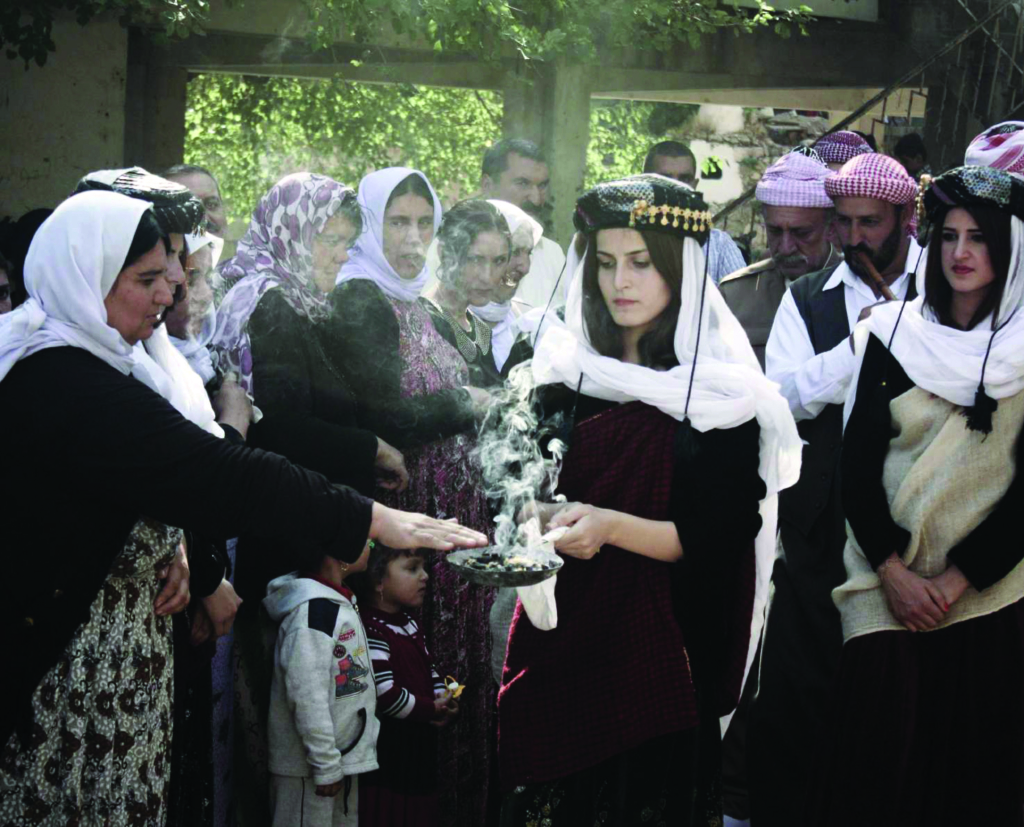
Sight unseen, that’s a convincing defence. Having myself watched The Dark Wind – which concludes with Pero’s father, Reşo (Adil Abdulrahman), and brother taking her from the camp, intending to shoot her – it doesn’t hold much water. Granted, Reşo baulks at going through with the honour killing, but his intent is unmistakably clear. The waters are further muddied when we learn that Hassan consulted with the Yazidi community but refused to make the changes they requested;[9]‘Director Defends Film’, ibid. in this light, the protests – and subsequent lawsuit[10]Or, at least, the threat of a lawsuit. An online article – ‘Yazidis File Lawsuit Against Kurdish Film Director over The Dark Wind’, Ekurd Daily, 12 September 2016, <http://ekurd.net/yazidi-lawsuit-film-director-2016-09-12>, accessed 15 August 2017 – certainly suggests, in its headline, that a lawsuit exists, but the body of the text (‘we are working to file a lawsuit against the director of the film and its staff’) is more ambiguous. – are somewhat understandable.
While The Dark Wind lacks the sharp editing of its influences, it outstrips American films when it comes to authenticity. No matter the budget, Hollywood studios are hard-pressed to replicate the realism of shooting in a war-torn region.
As mentioned before, I’m not really equipped to judge the validity of the complaints by the Yazidis. It is important to remember that – according to Aktaş and Hassan, at least – their story is based on the experiences of a real person. Honour killings are not without precedent in the Yazidi community, as evidenced by arrests in the wake of the stoning of a Yazidi teenager in 2007,[11]Mohammed Tawfeeq & Brian Todd, ‘Four Arrested in Iraq “Honor Killing”’, CNN, 21 May 2007,<http://edition.cnn.com/2007/WORLD/meast/05/18/iraq.honorkilling/index.html>, accessed 15 August 2017. and one would assume that Hassan, having grown up in Duhok, has knowledge of the broader sociocultural context surrounding his film.[12]I haven’t been able to establish whether or not Hassan is himself Yazidi, however. Perhaps The Dark Wind is an unfair characterisation of the Yazidis; perhaps their reaction is born of oversensitivity due to the scarcity of their representation on screen. While I can’t resolve this uncertainty, I do think it’s worth examining how The Dark Wind represents the Yazidi people, and whether it attempts to position itself as a representative depiction of its subjects.
Opportunistic drama
The Dark Wind is the first Iraqi film I’ve seen, so I was surprised to find how similar Hassan’s aesthetic approach is to Hollywood depictions of Middle Eastern conflict.
Take the film’s depiction of ISIS militants. When the extremist movement’s fighters descend on an unprepared Lalesh in the film’s first act, the black-clad terrorists are deployed in much the same way as their counterparts in most mainstream movies: as anonymous, dehumanised bogeymen. Outside of a brief scene in which Pero is sold off as a sex slave, we don’t see a single ISIS sympathiser’s face. This was a conscious choice by Hassan – ‘As we don’t know who exactly they are and we also don’t know what is the power behind them, we showed their faces covered in masks’[13]Hussein Hassan, ‘Director’s Note’, in Mîtos Film, op. cit., p. 6. – and one very much in sync with how terrorists are presented in Hollywood; for a recent example, witness the radicals firing machine guns at relics in the Iraq-set opening act of The Mummy (Alex Kurtzman, 2017).
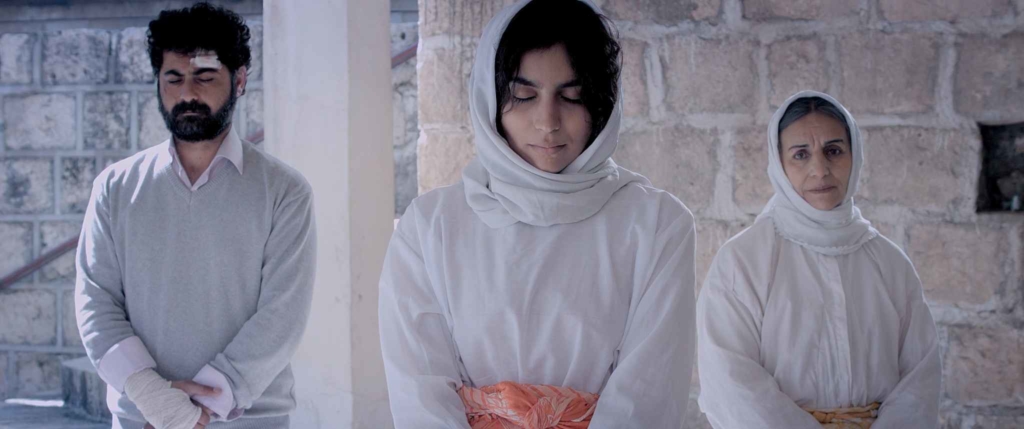
The Dark Wind’s action scenes – brief though they are – feel similarly indebted to Western cinema. A showdown around the half-hour mark between ISIS fighters and female soldiers from Iraqi Kurdistan military the Peshmerga, for instance, exhibits grimy, digitally shot immediacy that wouldn’t have been out of place in The Hurt Locker (Kathryn Bigelow, 2008) or any recent Michael Mann picture. The way Hassan uses washed-out sound design to draw us into the recently rescued Pero’s perspective likewise feels incredibly familiar. Yet, while The Dark Wind lacks the sharp editing of its influences, it outstrips American films when it comes to authenticity. No matter the budget, Hollywood studios are hardpressed to replicate the realism of shooting in a war-torn region. The Dark Wind’s intimidating sense of scale comes from shooting actual refugees and actual refugee camps as actual helicopters fly overhead.
Naturally, there are some marked differences between Hassan’s employed film form and the conventional depictions of the Middle East in mainstream movies. The colour grading of Hollywood films tends to emphasise the heat of the region, dialling up the yellow intensity of the sun and sand. Hassan, in contrast, opts for an overcast aesthetic, with the dull palette contributing to the melancholic mood. It suits the film: with seemingly infinite stretches of anonymous white tents in the UN camp, it is hopelessness, not heat, that is evoked for the audience.
But it’s Hassan and Aktaş’ storytelling where The Dark Wind diverges most notably from what’s familiar to Western audiences. It’s not hard to imagine a version of this story produced by a mid-level Hollywood studio – something released late in the year, in the hope of Oscar attention. Such a film would draw attention to the inherent goodness of the Yazidi people, to gently allow our appreciation of their unique community to flower in an extended opening act. We would come to sympathise deeply with lovebirds Pero and Reko before they are separated by the nefarious ‘dark wind’ of ISIS. But, more importantly, we would be given an education in a culture and context expected to be foreign to us Westerners.
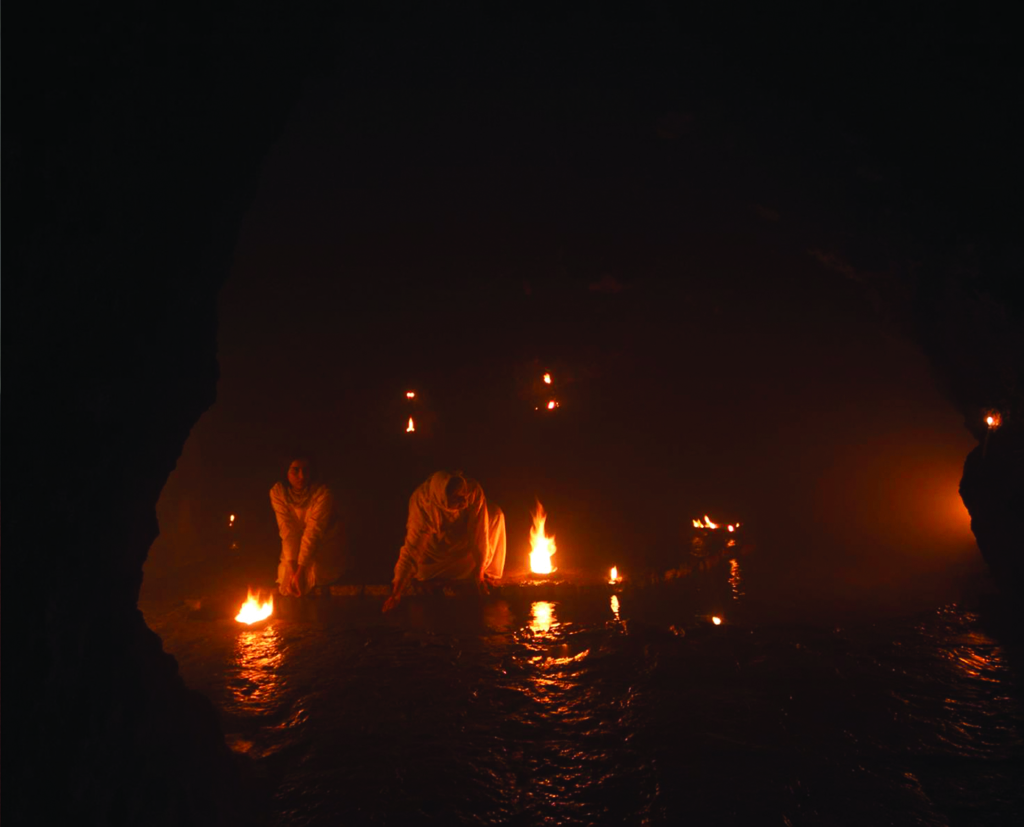
The Dark Wind, however, has no interest in taking its audience by the hand. The only establishing scene before the ISIS incursion is brief, and serves as little more than an introduction to Reko, Pero and their families. The film is precisely paced, without an ounce of narrative fat. This can be occasionally confusing for viewers unfamiliar with the politics of the area – after watching the film twice, I was still uncertain about the particulars of how Reko finds his fiancée – but it does reinforce the inference that the film is not intended as an encapsulation of wider Yazidi culture. Rather than being pitched as an introduction to the community for an international audience, The Dark Wind narrows its focus onto its two would-be lovers. And, as Variety’s Jay Weissberg observes, ‘the audience’s emotional investment is not just directed toward the raped woman but to her steadfast, heroic fiancé as well, who represents the finer side of his society’.[14]Jay Weissberg, ‘Film Review: The Dark Wind’, Variety, 27 December 2016, <http://variety.com/2016/film/reviews/the-dark-wind-review-1201947623/, accessed 15 August 2017.
Nonetheless, the film’s choices regularly reinforce the sense that Yazidi society is inherently intolerant to women returning from ISIS captivity. Take Pero’s arrival in the refugee camp: cinematographer Touraj Aslani films her from outside the car with a seemingly endless stream of suspicious faces reflected in the window. Reko subsequently gets into a fight with a man who’d been talking about his fiancée; Pero is the subject of stage-whispered gossip as she walks through the camp. Later, she is taken to a Yazidi temple as part of a healing ritual, but the precise language of the rite suggests her complicity: ‘You are not the reason for these unfortunate incidents and all the torture that you went through. The Yazidi Spiritual Council, along with Baba Sheikh and the Pir, forgive you for your sins.’ Perhaps ‘forgive’ is merely an unfortunate translation, but the prevailing sense here is that the film’s intent is to paint the Yazidis as unwelcoming to returned women.
The other contributing factor is the slender characterisation granted to The Dark Wind’s protagonists. Reko is a stoic hero; Pero, a beautiful, broken victim – a cipher that our own fears and anxieties can be projected onto. Neither cuts through as an authentic person, so the audience impulse is to read the couple as synecdoche for the experiences of the Yazidi people as a whole.
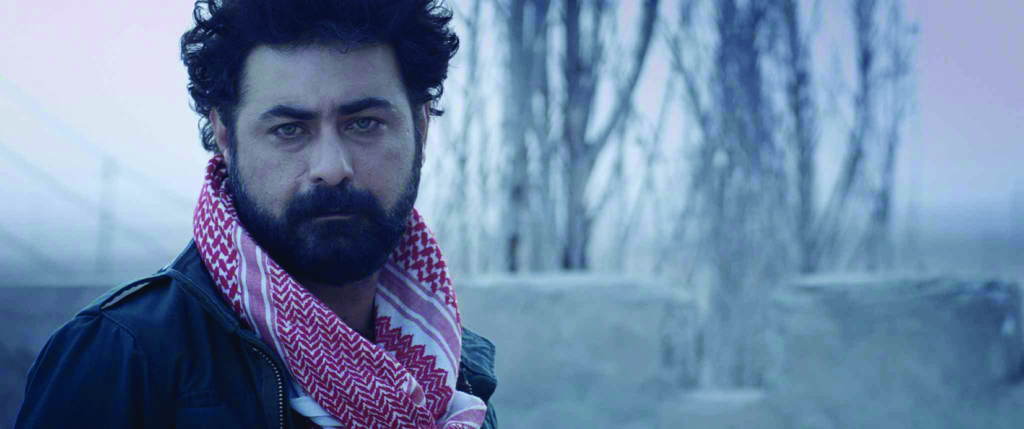
Even if we reject the reading of the film as merely a story of a couple in a time of crisis, there are alternative readings that don’t frame it purely as a criticism of Yazidi culture. For example, it seems reasonable to interpret The Dark Wind as a broader message about how terrorism corrupts a community – a message that surely resonates in the Western world, where seemingly terroristic acts are regularly met with racism and hate crimes against innocent Muslims.
Were The Dark Wind the second, or tenth, or hundredth film about the Yazidi people, perhaps it would have avoided the controversy it has encountered. As the first film on the subject, however, it has invited expectations that it simply cannot shoulder.
Endnotes
| 1 | Elizabeth Kerr describes it as ‘the first feature film from Iraq, or anywhere, to deal with the horrific pogrom against the Yazidi’; see Kerr, ‘The Dark Wind: Film Review | Busan 2016’, The Hollywood Reporter, 13 October 2016, <http://www.hollywoodreporter.com/review/dark-wind-review-938079>, accessed 15 August 2017. |
|---|---|
| 2 | The Asia Pacific Screen Awards. |
| 3 | Nansun Shi, quoted in ‘Winners Announced in 10th Asia Pacific Screen Awards’, Asia Pacific Screen Academy website, 24 November 2016, <http://www.asiapacificscreenacademy.com/2016/11/winners-announced-in-10th-asia-pacific-screen-awards/>, accessed 15 August 2017. |
| 4 | Mehmet Aktaş, ‘Producer’s Note’, in Mîtos Film, The Dark Wind press kit, 2016, p. 5. |
| 5 | ibid. |
| 6 | A small Kurdish city in Northern Iraq with a significant Yazidi population; also Hassan’s home town. |
| 7 | Karim Sleman, quoted in ‘Director Defends Film After 3 Protesters Arrested at Screening in Duhok’, Rudaw, 9 September 2016, <http://www.rudaw.net/english/kurdistan/090920165>, accessed 15 August 2017. |
| 8 | Hussein Hassan, quoted in ‘Director Defends Film’, ibid. |
| 9 | ‘Director Defends Film’, ibid. |
| 10 | Or, at least, the threat of a lawsuit. An online article – ‘Yazidis File Lawsuit Against Kurdish Film Director over The Dark Wind’, Ekurd Daily, 12 September 2016, <http://ekurd.net/yazidi-lawsuit-film-director-2016-09-12>, accessed 15 August 2017 – certainly suggests, in its headline, that a lawsuit exists, but the body of the text (‘we are working to file a lawsuit against the director of the film and its staff’) is more ambiguous. |
| 11 | Mohammed Tawfeeq & Brian Todd, ‘Four Arrested in Iraq “Honor Killing”’, CNN, 21 May 2007,<http://edition.cnn.com/2007/WORLD/meast/05/18/iraq.honorkilling/index.html>, accessed 15 August 2017. |
| 12 | I haven’t been able to establish whether or not Hassan is himself Yazidi, however. |
| 13 | Hussein Hassan, ‘Director’s Note’, in Mîtos Film, op. cit., p. 6. |
| 14 | Jay Weissberg, ‘Film Review: The Dark Wind’, Variety, 27 December 2016, <http://variety.com/2016/film/reviews/the-dark-wind-review-1201947623/, accessed 15 August 2017. |

